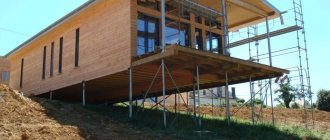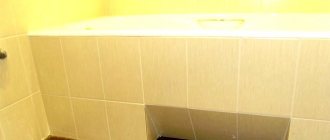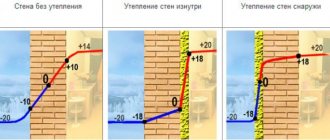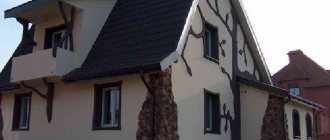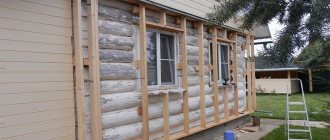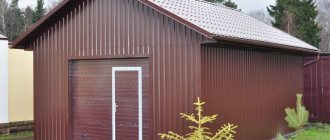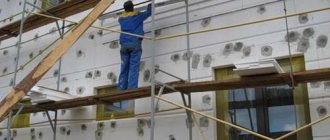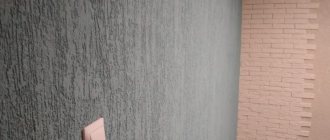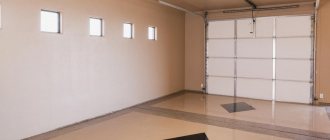If you need to save time and money when building a house, then choose a pile-screw foundation.
It is well built on problematic screws, but has its own nuances. The base of such a foundation is often finished at will, with or without insulation. An externally unlined basement will not look aesthetically pleasing, and there will be large heat losses inside the house.
To finish the basement of the building, different materials are used, installing them on the sheathing. We will talk about finishing the base of a pile-screw foundation in the article.
Base finishing
A variety of materials are used to finish the base. The main requirement is that they be strong enough to withstand being in water.
Optimally, the foundation cladding is carried out with a special one or covered with a profile metal sheet. The siding imitates the classic stone materials used for the base - rubble stone, brick, flagstone, etc.
Corrugated sheeting in soft colors for the base will also look quite beautiful. Their main advantage is that they can be easily washed from dust and dirt, and your base will always have a presentable appearance. Siding can be metal or plastic. It is better to use special siding for the base; siding for walls will not work here.
Before starting work, it is necessary to install the sheathing. It is made from wooden blocks with a cross-section of 50x50, which must be treated with a composition against rotting and fungus, or special plastic guides. Since the bars will be in a humid environment with poor air circulation, it is imperative to treat them with special compounds!
The bars are attached to the piles or monolithic base of the house using self-tapping screws. The fastening spacing depends on the type of siding panels. Typically, large-sheet siding is used with a spacing of fastening bars of 30 cm; the same rule is also suitable for corrugated sheeting. Then a metal corner is fixed at the bottom. The corner should be higher than the blind area, so it can be done in advance and the inner perimeter can be aligned with the corner.
After this, siding or corrugated sheeting is attached to the bars, cutting it along the lower corner, and maintaining a straight line on top. The corrugated sheets are fastened with the sheets overlapping into two waves. The corners are sealed, the windows are decorated with slopes. At the end of the work, a drip lining is installed in the upper part to prevent water from getting under the siding.
Mounting surface
Impregnation of wood with oil
Depending on the base: wood, concrete or metal, you choose how to cover the foundation. If everything is clear with concrete, then metal, due to its technical characteristics, must be ventilated. This also applies to wood; in a damp place, their service life is noticeably reduced.
Particular attention is paid to preparing this kind of foundation. For example, wood is impregnated with a special composition that protects it from rotting and fire
GF-021 – anti-corrosion primer
Bioprotective measures are also carried out, since untreated pillars are an excellent breeding ground for insects, which will render the entire wooden structure unusable in a couple of years.
Metal is treated with red lead compounds and special anti-corrosion primers. For such purposes, you can use a regular compressor with a spray gun. It’s not difficult to do this with your own hands. By diluting the soil, for example GF-021, to the desired consistency, you can carry out all the preparatory work on metal in one day.
The main advantages of pile-screw foundations
This method of creating a foundation is chosen when it is not possible to create a regular strip foundation using a cement-sand mixture. In addition, there are a number of other positive nuances:
- The root system of all plantings around is preserved.
- There is no need to set up a huge construction site.
- Suitable option for marshy soils.
- Work is carried out at any time of the year, including winter.
- The pile is reused.
- Small and medium-sized elements can be installed without the help of special devices.
- Allows you to place the house in close proximity to other residential buildings.
This option for arranging the foundation is also suitable for small country cottages. The work is completed quickly and there is no need to wait until the solution is completely dry, and this greatly reduces construction time.
How is the base of a pile foundation constructed?
In order to construct a plinth for a pile foundation, you must do the following:
- Make a sheathing. To do this, use wooden blocks or a metal profile.
- Insulate. This stage can be skipped, but if you plan to use the space as a full-fledged basement floor, then it is impossible to do without thermal insulation.
- Install finishing on the screw foundation of the house.
- Seal corners and seams.
- If necessary, clean the structure and additionally treat it with special compounds.
Required Tools
In order for the finishing work to proceed correctly, it is important to prepare materials and tools:
metal profiles or wooden blocks to create sheathing;- facing material: siding, corrugated board, thermal panels;
- fastening elements - self-tapping screws or self-tapping screws;
- insulation, if insulation is planned;
- waterproofing agent;
- screwdriver
Also, to isolate the base from the soil, it is necessary to make a special pillow. It is made from sand and crushed stone, adding a cushion under the base of the base.
If thermal panels are chosen as the facing material, then there is no need to install additional insulation. Such raw materials already come with insulation: it is polystyrene foam or polyurethane foam.
Calculation of the material is not difficult : you need to calculate the perimeter of each side of the base and correlate the obtained indicators with the dimensions of the selected facing material. During the work, scraps will remain - they can be used in difficult areas where a whole slab of sheathing is not needed. For thermal panels you will also need to organize drainage.
Base finishing options
Pile-screw foundation with a high grillage
Pile-screw base with strapping
- A pile-screw foundation with a high grillage is usually installed on unstable and moisture-saturated soils. The average length of the pile is 2.5 m, so the depth in any case will be about 2 m - in such cases, even the seasonal mobility of dispersed heaving soil is not a problem - such a depth is quite enough for immobility.
- Also, such foundations, using screw piles, are installed on slopes where the differences in the plane at different points of the base area are too large. Perhaps, in such situations, covering the base of a house on screw piles is most relevant, and here it is more convenient to use light finishing materials, for example, base siding.
Finishing work
We close the pile-screw base. Finishing principle
So, our task is to close the base for screw piles with our own hands, and for this we can use many materials. However, the essence of arranging such finishing of the basement of a house with your own hands is very similar to one another, since the principle still does not change.
The brick will be covered with ceramic tiles or simple plaster
One of the options is when the base on screw piles is sealed using a low grillage. That is, when installing such a foundation, a trench up to 30 cm deep is dug along its perimeter and a tape is poured, where the upper part protrudes 10-20 cm above the ground level. This way you get a pedestal for laying bricks, which, in turn, will serve as a base for tiles or plaster.
Here you get, as it were, two foundations in one - a screw and a strip, but this combination will not only make it possible to easily close the piles, but also increase the strength of the foundation. In addition, concrete is poured with a light reinforcement frame - as a result, the tape will not crack and will also serve as part of the decoration of the lower part of the house.
Finishing with stone panels
Another option you see in the photo above is to install sheathing on piles under some sheet material. In this case, these are stone panels, but you can just as easily install composite or siding on them. Here you see two wooden profiles, but there may be more of them - everything will depend on the height of the base and the size of the finishing material itself.
The sheathing here does not have to be installed from wood - more often it is made from metal, and for this they can use a 20x40 mm metal profile or even a CD, which is used for installing drywall.
Fixation can be done directly on the piles, but this is convenient for timber and metal, where the first is screwed and the second is welded. For CDs, it is best to weld ears (metal plates) onto the piles, onto which the brackets can be fixed.
A corner 120×120 mm serves as a base for a brickThere is another way to close the void under the building, and its price will be much less than installing a strip foundation. A corner of 120×120 mm is welded to the piles, which will serve as the basis for the facing brick, where the width of the bed is exactly 120 mm. The corner is welded strictly level and if the area is inclined, then in the upper part it is better to go deeper into the ground so that there is no void left.
Facing brick laying
Before laying decorative bricks, the corner should be primed to reduce the possibility of rusting to a minimum. The construction of the plinth is carried out as usual masonry with a spoon ligation and a seam of at least 5 mm.
After you have raised the entire perimeter, you need to put ebbs on top, which can be decorative, that is, from a brick set, or make them yourself and galvanized sheet, but the first option will look much better.
Insulation of a screw base with extruded polystyrene foam
You may also need to insulate the foundation base and for this you can use extruded polystyrene foam. A trench 20-30 cm deep and wide is dug along the perimeter of the building using a shovel bayonet and sheathing is mounted on the piles. Then you attach sheets of insulation on top of which you can lay tiles or cover them with slate sheets, as shown in the photo.
It's better to be fully prepared
A screw pile consists of a shaft, which can be solid or composite, and a tip. The essence of its application is to, due to turning forces, pass through weak layers of soil and cling to dense, incompressible layers. It is fixed in the ground thanks to the blades; their surface, and not just the trunk, rests on the ground.
Operating principle of a screw pileSource avocet.ru
If we compare the screw version of piles with the driven one, the advantages of the former are obvious when compared from the point of view of the complexity of installation, the presence of noise and vibration. Again, in a small facility you can do without drilling or piling equipment. However, not everything is as wonderful as we would like.
Is the screw base as reliable as is commonly believed?
Pile foundations, including screw ones, are laid in difficult hydrogeological conditions when the strip option is unacceptable. And they must be designed in the same way as any others, with calculations based on load-bearing conditions: soil resistance, strength of piles and grillages material, settlement from vertical loads. Not only does no one do this during self-construction, but it is also almost impossible to find supports of proper quality:
- In pursuit of cost reduction, modern manufacturers remove up to several millimeters of metal from screw piles, which previously served as an anti-corrosion safety margin, and instead provide a cheaper anti-corrosion coating.
- The diameter of the blades was also reduced to a minimum, and since the thickness of the trunk proportionally depends on this size, it also became smaller. In a new format, far from ideal, the pile most often used in low-rise construction has dimensions of 300/108 (blade diameter/trunk diameter) with a wall thickness of 4 mm. By the way, such parameters of screw supports are simply unacceptable in Western countries.
Modern (budget) screw pile formatSource ecodom-kostroma.ru
Excerpt from the documentSource ecodom-kostroma.ru
- However, even today manufacturers guarantee metal piles a half-century service life, although at the same time they have become almost half the price of bored piles - capital, time-tested and very reliable. There must be some catch here!
- And this is what it consists of. It is not worth installing metal supports with modern pile parameters if the service life of the wall material is longer than 50 years (concrete, brick, natural stone). And even a wooden frame, with proper treatment and external protection, can last longer than this “very reliable” foundation.
Reinforced concrete grillage will last longer than supportsSource evroctandart.su
It turns out that building a house on screw piles only makes sense if it is built using frame technology. This foundation design fits into it just perfectly: the load on the support is minimal, and it does not need to “compete” with the walls in terms of durability. First of all, this concerns light outbuildings, for which hardly anyone expects such a long service life.
The feasibility of such a solution is very doubtfulSource www.hebelblok.ru
How to make sure the quality of piles
It was about the general capabilities of the foundation. Now about handicraft production, which is basically impossible to get rid of in our country. Therefore, before you screw in screw piles on your site, you need to look for products of acceptable quality. There is no ready-made recipe here, but we can give some advice on this matter:
It is unlikely that you can purchase high-quality metal piles at a run-down metal warehouse, since their production is a technologically complex process and requires good organization of labor and material support.
This is how blades for piles are cut Source chelny.zoon.ru
If the piles have a minimum thickness - the notorious 4 mm mentioned above, then the manufacturer is obliged to provide reliable anti-corrosion protection. Do not believe if they tell you about the presence of a zinc coating - by definition, cheap piles cannot have it, and installations for its application are in short supply. In practice, other coatings are used (for example, GF-021 primer), sometimes even of normal quality. But you need to be sure of this.
The quality is obviousSource bibliostroy.ru
The next tip again concerns the thickness of the pile wall. It is already extremely reduced, and if you measure this size with a tape measure and find a missing millimeter, refuse the purchase. Because of this, the service life of a house placed on such a foundation can be reduced by 10 years.
Siding
Siding is a modern material and is very popular, due to its many advantages. A special base type is used for work, the durability of which is in many ways superior to the façade version.
You can cover the foundation as follows:
- The frame is pre-installed. For this, the most affordable installation option is used.
- The first method resembles the process of creating piles with a grillage. The peculiarity is that the tape is poured into a small depression level with the ground. A cohesive structure is created that will serve as support for the masonry.
- The second method is used when the piles are made of pipes. Corners are welded to the base at a short distance from the ground; for reliability, the place under them is compacted and a support is created. Rolled metal is welded on top, the thickness of which depends on the load.
There are 2 common cladding methods:
- installation of a suspended plinth;
- construction of brick foundation walls.
The first method is much simpler - you just need to install decorative panels on a wooden or metal sheathing attached to the stilts or walls of the house. In the second case, you will have to make a small concrete base. What both methods have in common is that even an inexperienced person can handle the job.
How to cut corrugated sheets
Due to the fact that the corrugated sheet has a protective anti-corrosion and decorative coating, not all cutting tools are suitable for cutting it. Some of them can be used, but only if certain conditions are met.
Bulgarian
It is often used for cutting metal products, but it is of little use for profiled sheets. The explanation lies in the fact that when working with an angle grinder, a lot of sparks are generated and the surface heats up. This negatively affects the condition of the galvanized and polymer layers.
If, after all, a grinder is chosen for cutting sheets, then it is recommended to use only thin disks with a thickness of 1-1.16 mm with carbide teeth. The second way out of the situation may be to wet the cutting line and then stick masking tape on it.
A circular saw
This hand-held woodworking tool is suitable for this material if it is equipped with a special metal cutting disc with fine teeth with carbide inserts
In this case, it is important to adjust the depth of the disk so that it reaches the lowest layers of the sheet. To maintain the integrity of the polymer film, experienced carvers use a specially made device - a jig
It is a plate of plywood or OSB 1-2 meters long and 30-40 cm wide. A cut is made in the jig along the central axis, not reaching 10 cm from the edge. Align the slot with the cut line. The saw blade is placed on the jig and the metal is cut.
To maintain the integrity of the polymer film, experienced carvers use a specially made device - a jig. It is a plate of plywood or OSB 1-2 meters long and 30-40 cm wide. A cut is made in the jig along the central axis, not reaching 10 cm from the edge. Align the slot with the cut line. The saw blade is placed on the jig and the metal is cut.
Jigsaw
In some cases, this tool is quite suitable for cutting profiled sheets. Moreover, with its help it is possible to make curved cuts, which are not possible when using an angle grinder or a circular saw. To get a high-quality result and quickly sheathe the plinth, it is recommended to take a professional-grade jigsaw with a fine-toothed file and set high speeds when cutting. For long straight cuts it is also worth using a jig.
Electric scissors
The most convenient way to cut a profiled sheet is with electric scissors. With any trajectory of movement, a very clean and even cut is obtained. Another advantage of this tool is that working with it does not require an assistant. According to the principle of operation and design, there are three types of electric shears, which are used in finishing the base:
- Leafy. They provide excellent cutting quality without waste, but they are difficult to work along a curved line.
- Splined. When cutting, chips are formed, and a curved cut is possible only with a large radius.
- Nibblers. They produce a lot of waste, but allow you to cut elements of any shape, regardless of thickness and relief.
Finishing the base with thermal panels
Recently, so-called thermal panels have appeared on the finishing materials market. This is a decorative finishing material consisting of two layers - an internal insulating layer and an external facade layer.
The inner layer of insulation can be represented by the following materials:
- Styrofoam;
- expanded polystyrene;
- pressed shavings;
- polyurethane foam;
- mineral wool.
The most commonly used exterior finishing material is:
- clinker tiles;
- fake diamond;
- PVC;
- plastic and other polymers;
- crushed marble.
Obviously, such material has aroused interest among buyers, because it has many obvious advantages.
Advantages and disadvantages of thermal panels
- Heat and sound insulation. Two layers of dense material perfectly dampen extraneous sounds, and the presence of dense insulation reliably protects the base from the negative influence of the environment.
- Durability. These panels can last 30 or 50 years! Not much time has passed since the invention to see this firsthand, but practice shows that after 10-15 years of use, the panels did not collapse, deform, or fade in the sun.
- Resistant to extreme atmospheres. In conditions of extremely low temperatures, where the bases of houses are necessarily insulated before covering, facade thermal panels are especially popular. This finishing material can withstand temperatures of -80°C. Moreover, the panels can withstand at least 50 freezing and defrosting cycles.
- Low environmental friendliness. Manufacturers call their products environmentally friendly, but the presence of PVC or polymers in the composition casts doubt on this.
- Thermos effect. The obvious disadvantage of this material is the fact that it does not allow air to pass into the room. This means that without additional ventilation of the room, a thermos effect can be created inside the house. Of course, by covering only the base with panels, you don’t have to worry about this problem. But if you decide to cover the entire house with this material, take care of air circulation.
Installation features
It is very convenient to install such finishing on a plinth, because each panel has grooves and ridges at the ends, thanks to which the elements are assembled into a single monolithic structure.
It is only important to understand that the presence of insulation on the panels themselves implies their installation on a pre-leveled wall. As for attaching elements to the wall, for this, given their low weight, an adhesive composition is used
And if necessary, for greater reliability, the panels can be fixed with nails or self-tapping screws.
Profile flooring
Corrugated sheeting was originally used as a roofing material. Currently, it is widely used in the field of plinth cladding. It has the following advantages:
- Easy to install. Sheathing the basement of a house can be done independently, using a metal saw and a screwdriver. No special skills required.
- Wide variety of colors.
- Low price compared to other options.
- Light weight, which prevents the creation of additional load on the foundation.
- No additional processing required.
Despite all the advantages, profile flooring has a number of significant disadvantages:
- Low resistance to mechanical stress and high likelihood of scratches.
- Areas with missing polymer coating are vulnerable to corrosion.
- Despite the variety of colors, corrugated sheeting has only one type of shape.
- Increased susceptibility to rotting, especially in places of contact with open ground.
- Rapid fading and loss of glossy shine.
It is worth noting that corrugated sheeting is quite flexible and can be easily cut, so it can be used regardless of the type of structure.
Basement siding
The most popular and frequently used option for cladding the basement of a house on a pile foundation is siding. The material has many advantages, including:
- Low cost of both the material itself and the components needed during installation work.
- Installation of basement siding does not require special skills, which allows you to carry out the installation yourself.
- Durability. Plastic does not rot and is also resistant to negative environmental influences.
- Variety of designs. It can imitate the texture of natural materials, which allows it to organically fit into the overall design of the house and the surrounding area.
- Easy to care for. Siding is easy to clean, which can be done even with the use of strong detergents.
It has virtually no drawbacks, which makes it the most popular and frequently used.
Flat slate
Previously, flat slate was used in almost any type of decoration. Now this option is used in rare cases, as it is considered unreliable. Among the main advantages it is worth highlighting:
- possibility of self-installation if you have a special set of tools;
- increased resistance to decay and negative environmental influences;
- slate allows the use of thermal panels for insulation;
- practically unlimited service life.
However, this type has a large number of disadvantages. The main ones worth highlighting are:
- Increased fragility of the material. It is quite dense, but if it is cut incorrectly or drilled poorly, the slate crumbles and is destroyed.
- Increased complexity of fastening to piles.
- The price of flat slate is significantly higher than most other materials.
- Requires additional work using other materials to give the slate a presentable appearance.
You can lay this kind of slate yourself
How to sheathe it yourself?
You can improve the external decorative characteristics of the foundation areas located above the ground and additionally create protection from adverse influences with your own hands. To do this, you must adhere to installation technology.
After completing the basic calculations, purchasing tools and facing material, you can proceed directly to covering the base. At this stage, all work is carried out in a given sequence, that is, step by step.
Waterproofing
Before installing the sheathing on the foundation, its base must be protected from water. Waterproofing is applied to all exposed concrete surfaces. Usually, the coating type of treatment is optimal for this, and a little less often - the plaster type of treatment.
Special attention should be paid to the junction of the blind area and the plinth - in this place, waterproofing is carried out with hydroglass insulation, a special film or membranes. They are laid on top of the insulating board on the purlins, and then run through the cladding
These simple measures will effectively protect concrete from destruction due to exposure to precipitation and underground moisture.
Frame installation
Next, you need to mark the surface to be sheathed and calculate the location of the main load-bearing elements of the sheathing. It should be taken into account that the step between the guides should be 50–60 cm. In addition, door and window openings, as well as corner parts of the base, will require separate brackets - they are mounted at a distance of up to 1 m from the corner part. Holes should be drilled according to the marks given; it is advisable to use a hammer drill for this. The length of the hole should exceed the size of the dowel by 1–1.5 cm. However, it must be borne in mind that if the base is made of brick, it is not recommended to drill the masonry seams.
The holes are thoroughly cleaned of dirt and construction dust, and then the brackets are attached. For uneven foundations, the optimal solution would be brackets with movable parts; they can be moved if necessary and fixed at the desired level. To begin with, fix the brackets along the edges of the basement area. Subsequently, they are connected to each other with a construction cord and form a certain level for installing intermediate brackets.
Thermal insulation
The foundation is insulated using basalt or glass wool; as an option, you can use extruded polystyrene foam. They start working from the bottom, moving up. First, slots are formed in the insulation to accommodate the brackets, then the slabs are placed on the brackets and secured with disc-shaped teeth, their number on each slab should be five or more.
Fastening corrugated sheets
The corrugated sheet is fixed directly using rivets and self-tapping screws. For each square meter you will need approximately 7 pieces. The sheets are installed vertically, starting from one of the corners. The sheets are laid overlapping one or two waves - this will ensure maximum strength and sealing of the structure. The sheet is fastened with self-tapping screws from the outside, in the deflection of the corrugation. The sheathing in the areas of the joints of the panels is covered with specialized corners
Please note that the fasteners should not be tightened too tightly, otherwise dents will appear on its surface.
During installation work, remember to arrange the ventilation system. The holes in the panels must be prepared in advance; in order to close them, you need to buy special gratings - they are sold in any construction supermarket. They will not only improve the external characteristics, but at the same time prevent the penetration of dirt and dust behind the skin. The product is fixed using mastic, and the gap between the ventilation grille and the canvas is sealed with silicone sealant.
At the end of the work, you should decorate the corners using a decorative finishing strip. If during installation of the corrugated sheet the surface of the material is damaged, then all chips and scratches must be covered with an anti-corrosion compound and then painted in the same tone as the surrounding canvas. The foundation of a private house, finished with profiled sheets, provides reliable and at the same time budgetary protection of the structure from destruction.
In the next video you will see the lining of the foundation plinth with corrugated sheets.
How to cover a pile foundation from the outside: materials, photos, videos
› Foundation work ›
One of the final stages of construction is the finishing of the basement area. Always in houses where there is a pile foundation, there is space left, because of which the entire building takes on an unfinished appearance.
Therefore, it is important to understand whether it is worth finishing, what materials are best to use for this purpose, and also to thoroughly study the correct technique for performing finishing work. In this article we will look at how you can cover a pile foundation from the outside, the advantages of each type of material, as well as how to perform the work
In this article we will look at how you can cover a pile foundation from the outside, the advantages of each type of material, as well as how to perform the work.
What are the advantages of finishing work?
In addition to the fact that manipulations allow you to create a finished, aesthetic appearance for the entire building, it is also worth noting some other advantages of the finishing:
- you can increase the thermal insulation of the entire house several times, which means that in winter the room will always be warm;
- prevents precipitation from accumulating under the building;
- eliminates the possibility of medium-sized and large-sized animals getting under the floor of the house.
Of course, these factors play an important role, which is why many owners of private houses and penthouses prefer to carry out work of this kind.
Let's consider the materials that are relevant to use for finishing the foundation.
Brick
If desired, the cladding of the house can be done from more serious materials that will last for a long time - brick is considered to be such a material. In addition, it has an aesthetic appearance and is durable. But it is worth noting that in this case the work will have to be completed longer, and it will be more labor-intensive.
To close a pile foundation, you must first arrange the foundation for the masonry. Just as in the case of siding, it will be necessary to provide a special layer that will prevent soil heaving.
One of the most suitable options for mounting bases is a monolithic tape. Experts recommend using it in cases where construction is planned on soil that is easily deformed.
Let's consider the advantages of decorating the foundation of a house with bricks:
- serves as an excellent thermal insulation material (considered the most reliable of all available);
- does not require any additional finishing;
- can always be repaired if necessary;
- durable.
But brick also has disadvantages as a finishing material. It is quite heavy and expensive; it is difficult to install it yourself (you will need the help of specialists).
Plastic panels
You can also use this material to finish the foundation of a house; in this case, the installation technology will be exactly the same as in the case of siding. If you decide to design a foundation using these particular materials, then you will be able to appreciate the following advantages:
- pleasant appearance of the building;
- you can choose any color or texture of the panels;
- providing additional rigidity to the house;
- the material does not rot;
- resistant to both chemical and mechanical influences;
- has an affordable price.
However, when choosing plastic panels, it is worth remembering that in any case, natural stone or brick will look much better.
Profiled flooring
If you are thinking about how to cover a pile foundation, without resorting to the help of specialists, then it is worth mentioning corrugated sheeting. Its installation is easy; the frame is mounted in the same way as for installing siding.
Corrugated sheeting is durable and easy to use both in terms of operation and installation. A significant advantage is also the fact that a large number of color solutions are provided.
If you have never encountered foundation finishing work, it’s not worth the risk. It is best to immediately seek help from experienced specialists who will do all the work quickly and efficiently.
How to cover the pile foundation from the outside? Link to main publication
Plastic panels
When using decorative panels made of plastic, a cheaper coating is obtained, but less aesthetically pleasing. Products made from natural brick or stone look more attractive. But such finishing material hides the foundation of the piles well.
If the panel sheet has an increased thickness, it can withstand quite large loads. He is not afraid of chemical and biological influences.
If curtain panels are used, the space between the house and the ground surface remains empty. Water cannot collect in it and condensation cannot form due to free air circulation.
The panels are very similar in appearance to the monumental base. At the same time, they retain all the properties of a foundation base on piles. This is especially noticeable in areas with significant elevation changes and other terrain difficulties.
Watch the video to appreciate all the benefits of covering the base of the house with decorative panels:
Concreting and waterproofing
In order to carry out concreting, it is necessary to purchase: reinforcing mesh, steel wire or rods, asbestos-cement slabs or boards treated with an antiseptic, formwork material and a cement-sand mixture.
It is necessary to build formwork around it, install reinforcement, and then pour it using concrete mortar.
It is imperative to insulate the basement covering from moisture. Waterproofing is laid between the base and the plinth.
If brick or stone was used to create the base surface, a layer of roofing material should be placed between the rows of masonry or bitumen should be poured. In the case of concreting, insulation is made in two layers.
For insulation, it is better to use foam sheets. They must be laid inside the structure. The insulation must exceed the height of the ceiling.
To attach the foam, you can use special glue. After laying the insulation, you should begin the final finishing. This can be done using:
- Decorative facing stone;
- Porcelain tiles;
- Clinker tiles;
- Basement siding;
- Mosaic plaster.
How to close the foundation from the outside, simulating brickwork - watch the video:
If you have already built a house and have not finished finishing the foundation, you should quickly begin to solve this problem. The house will become much warmer, it will take on a more beautiful appearance. You will feel comfort not only being inside the room, but also contemplating it from the outside.
Hello! On the website, we got a lot of ideas for decorating and building a residential building, and today we decided to repay our favorite site by presenting to the readers our version of the answer to the question: “how to cover the pile foundation of a frame house from the outside?”
When starting a construction project, we, like many other people who decided to build a house with their own hands with the minimum possible amount of money spent, chose the most budget-friendly foundation option that allows us to quickly “get down to business” - a foundation on screw piles. And once we’ve built it, we’ll think about what we’ll use to cover it with.
Time passed unnoticed. A year has flown by, the frame house is standing and blown by all the winds, siding has been ordered to finish the house, but as it turned out, another 50-60 thousand rubles need to be spent on the basement siding. according to the most conservative estimates. At that time, we did not have such funds, but after installing the fence we had sheets of corrugated sheets that were exactly the color of our metal tiles. We decided to use these sheets to cover the pile foundation from the outside.
Frame system
The frame system includes the initial installation of the sheathing, on which the cladding is subsequently placed. The sheathing consists of metal bars or pipes, including corners that are welded to the piles, as well as wooden elements.
It is on this structure that the finishing itself is installed, which can be made of any material. It is worth considering that each type of material has its own characteristics, and cladding is done taking into account every nuance and compatibility of elements and substances.
The sheathing and the entire frame that occupies the space under the house must be processed.
Metal elements are treated with anti-corrosion substances, and wood is treated with a special antiseptic.
Types and features of basement siding
Manufacturers offer the buyer several types of finishing materials. Siding differs in raw materials:
- Vinyl - made from PVC. Therefore, the panels are light and easy to work with.
- Metal base siding - galvanized steel is chosen for production. They are also treated with protective compounds, both on the front and back sides. The weight is greater than the previous version, but the strength is much greater.
Base material is distinguished for finishing and texture:
- Brick panels - completely imitate brickwork. From a distance it is almost impossible to distinguish from the original. Everything is achieved due to the fact that for the manufacture of panels they use impressions of ordinary bricks along with chips and cracks.
- Stone cladding. There are several options for panels for the base of a pile foundation. The choice will have to be made from imitations of rubble, burnt, rock stone and alpine granite. Each of these materials has excellent characteristics and is perfect for finishing the base.
Let's figure out why basement siding is so popular for finishing. Everything is connected with several advantages that this material has:
- Availability. The price is affordable, so almost everyone can afford to buy it.
- Mechanical stability. If you decorate a pile-screw foundation with basement siding, then it will not be afraid of even the strongest blows.
- Biological inertia. Insects, mold, fungi and rodents do not damage the material.
- UV resistance. The panels retain their original color for many years. Only the shade changes, but this will happen evenly and unnoticed by the owner.
- Duration of operation. Some manufacturers indicate a period of 45–50 years.
- Easy to install.
- Versatility. Installed on any foundation.
But this material has several disadvantages. Firstly, these are linear changes with temperature. Secondly, flammability. This only applies to vinyl siding.
Insulation options
The plinth cladding can be of several types. The decision which one to use is made based on aesthetic considerations, financial capabilities, and the qualifications of the workers who will perform the finishing.
Insulation of the base can be done in two ways:
- on a separate tape structure;
- along the sheathing, which is attached to the piles.
Tape design
The first option is more complicated and also has a number of limitations. A shallow-type tape structure can be made of concrete or brick. Most often, it rests on the ground or its own small monolithic foundation (read more about the construction of a shallow strip foundation). But when building on heaving soils, it is strongly not recommended to use this option. Especially if we are talking about a brick base. In this case, the ground rises (swells) in winter. Moreover, the process occurs unevenly. Having dug out the snow from the plinth structure, at some point you will see inclined cracks, which indicate damage from frost heaving.
A strip base on which, if necessary, you can even attach insulation
This phenomenon can be prevented by eliminating one of the heaving factors:
- low temperature;
- moisture.
It is impossible to fulfill the first condition when manufacturing a non-buried tape. The soil under the cladding of the basement of the house will still freeze and deform. Moisture removal may also be ineffective.
It is reasonable to use strip lining only on those soils that are not prone to heaving. Such bases include coarse soils, medium or coarse sand. This option is also suitable for regions with warm climates, where negative temperatures are rare.
The insulation is attached to the brick according to the standard scheme. Penoplex is best suited
The insulation is fixed to a concrete or brick wall, similar to the type of thermal insulation of the external enclosing elements of the building. It can be performed both without an additional frame and with its use. The method depends on the type of finish chosen.
Should you close the vents for the winter or not?
There are two points of view on whether to close the ventilation holes in the underground for the winter or not. If they are left open, moisture will not accumulate. And this is good, but in return we get a cold floor and increased heating costs. The solution is enhanced floor insulation so that ventilation does not affect its temperature and does not require increased heating.
If the vents are closed for the winter, moisture accumulates in the soil. Warm, moist air from the house enters the floor, falling on cold surfaces, and in winter these are the walls of the basement, the moisture condenses and flows into the ground. This means that later, in the summer, it will evaporate from there, increasing the humidity in the basement.

